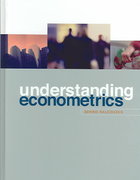Question
Consider an economy where desired consumption can be described by the equations: Desired consumption is C = 500 + 0.6(Y-T). (C is desired consumption.Y is
Consider an economy where desired consumption can be described by the equations:
Desired consumption is C = 500 + 0.6(Y-T). (C is desired consumption.Y is GDP.T is lump-sum taxes.This should make some intuitive sense:consumption increases in GDP and decreases as taxes go up.)
Desired investment is I=2160-100r.(I is desired investment.r is the real interest rate.)
Government spending is just G=1000
Taxes are just T=1000
The economy has no imports or exports.
a) Write down an equation for aggregate demand in the economy, and plug in the information given above.(You should be left with only two variables,Yandr.)(You can't quite actually get a number for aggregate demand yet, because we don't knowYorr, yet.)
b)Let's consider an entirely demand drive economy.I.e., suppose that the amount supplied, and therefore output in the economy is determined entirely by aggregate demand.That is,producers in the economy will produce however much stuff is demanded.Therefore, output (Y) has to equal aggregate demand (your equation from part (a)).
Suppose that the real interest rate was fixed at 5%.(Plug in r=5, not r=0.05.)Determine equilibrium GDP (output, which is the same as aggregate demand here) in this economy.
c)The multiplier!Suppose that the government increased their spending from 1000 to 1100.Suppose nothing else in the set up of the problem changed and that the interest rate remained fixed at r=5.Repeat part (b).That is, calculate the new GDP in this economy.
What is the government spending multiplier here?(I.e., when G goes up by 100, how much does overall GDP change by.)Explain (briefly) why overall GDP goes up by adifferentamount than just 100.
d) The tax multiplier!Return to the situation where G=1000.But now suppose that the government cuts taxes from T=1000 to T=900.Suppose nothing else in the set up of the problem changed and that the interest rate remained fixed at r=5.Calculate the new GDP in this economy.
What is the tax cut multiplier here?(I.e., for every one dollar cut in taxes, by how much did GDP increase?)Any speculation (intuitively) about why this multiplier is different from the government spending multiplier?
e) Reset G=T=1000.Now let's move to the long-run, where we consider the aggregate supply is fixed by the factors of production.Suppose that potential output in the economy is fixed (by productivity, labor, etc.) at Y=6000.Determine the equilibrium real interest rate in this economy. Determine the level of private investment (I) in the economy.
(Hint:You still need aggregate supply (6000) to equal aggregate demand, but the interest rate is now the variable that changes to make everything reach equilibrium.)
f) In the long run, suppose that Y is still fixed at 6000.Now suppose that G increases to 1100.What happens now in the long run?In particular, what is the equilibrium level of GDP? (Hint: this is sort of a trick question.)What is the equilibrium interest rate?What is now the level of private investment?What was the government spending multiplier now?
g) You should have gotten a very different result for the multiplier in part (c) and in part (f).Why?What's the difference?
Step by Step Solution
There are 3 Steps involved in it
Step: 1

Get Instant Access to Expert-Tailored Solutions
See step-by-step solutions with expert insights and AI powered tools for academic success
Step: 2

Step: 3

Ace Your Homework with AI
Get the answers you need in no time with our AI-driven, step-by-step assistance
Get Started


